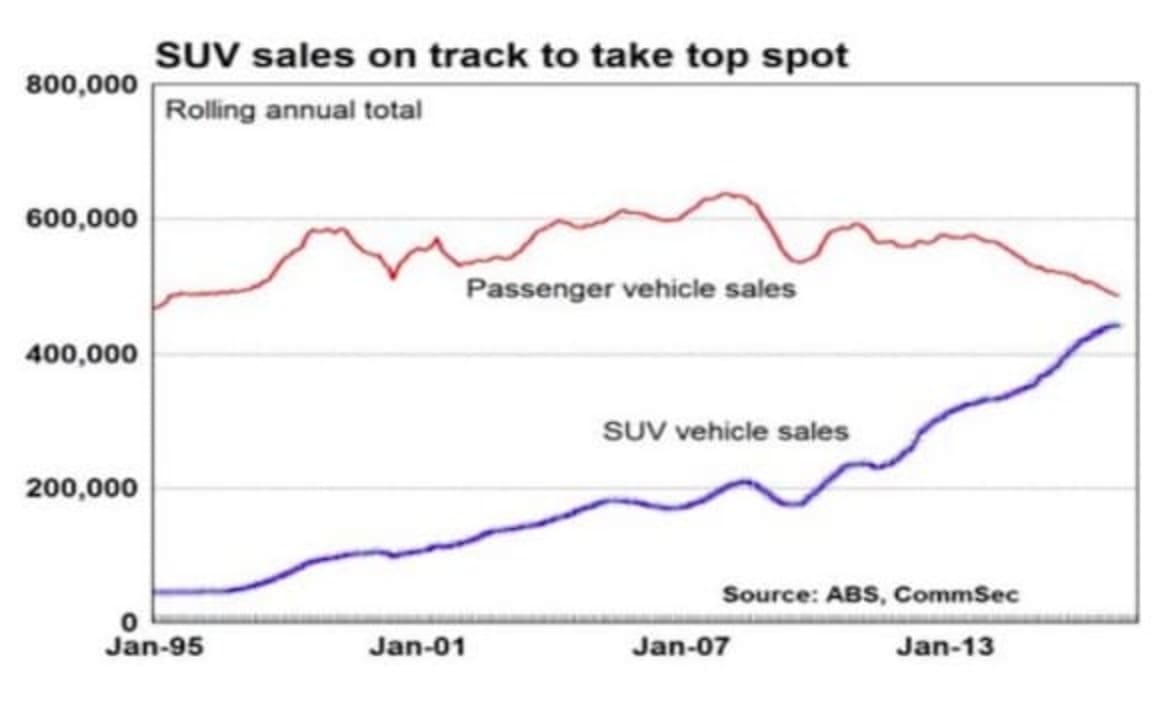Difficult to be negative after record car sales in 2016: Savanth Sebastian

It is difficult to be negative about the economy when data shows that there were more new vehicles sold in 2016 than any calendar year before.
And it is not just so-called ‘standard’ vehicles being sold, but sports/luxury vehicles are taking a bigger share of total sales.
It’s not hard to see why people are updating their rides.
Car affordability is at the best levels recorded, employment is rising, interest rates are at record lows and wealth levels are at record highs.
Car affordability is even stronger when you consider that vehicles built in 2016 are far superior to those sold in the early 1970s.
Vehicle sales should remain solid in 2017. Interest rates are unlikely to rise any time soon and car manufacturers are competing hard for business, restraining prices.
In addition, all indications point to firm conditions in the job market.
The area to watch is the housing market as softer home prices could restrain car buying enthusiasm - although even that seems to be an unlikely outcome.
The services sector expansion is now accelerating at a healthy pace. In fact the Performance of Services index is now showing the fastest pace of expansion in almost 10 years.
And more importantly the resurgence in activity is broad-based with all five components of the index recording strong gains.
In particular the lift in new orders and the employment sub-indices bode well for hiring in coming months.
It was interesting that respondents noted a variety of reasons for the lift in service sector activity - from stronger customer demand, a lift in mining sector activity, to a lower Australian dollar and “good agricultural harvests”.
As we have been saying for a couple of months, the result mirrors the lift in activity noted across internal Commonwealth Bank Indicators like the Business Sales Indicator.

The Reserve Bank will be quietly confident on how the economy is panning out.
The key will be how non-mining business investment evolves over the next six months. CommSec expects no change to interest rates over 2017.
According to the Federal Chamber of Automotive Industries (FCAI), new motor vehicle sales totalled 98,763 in December, down 0.9 per cent on a year ago.
In 2016, a total of 1,178,133 new vehicles were sold – a record for a calendar year.
Sales by State: NSW (397,563), Victoria (326,269), Queensland (233,026), Western Australia (100,234), South Australia (71,738), Tasmania (19,751), ACT (18,816) and NT (10,736).
Respective market shares by vehicle type were: passenger (41.3 per cent), SUV (37.4 per cent), light commercial (18.5 per cent), and heavy commercial (2.8 per cent).
The top-five segments by volume were small cars (224,450, down 4 per cent), medium SUV (172,194, up 16.5 per cent), 4×4 ute (146,820, up 10 per cent), large SUV (142,495, up 2 per cent) and small SUV (110,414, up 2 per cent).
The sub-total of sales by buyer type for 2016 was: private (571,544, down 7 per cent), business (472,156, up 13 per cent), government (40,989, down 1.4 per cent) and rental (60,335, up 6 per cent).
Buyers using their ABN to buy a single car count as a business sale, while novated leases count as private.
Leading vehicle sources: Japan (325,689), Thailand (285,465), Korea (162,642), Germany (87,392) and Australia (87,096).
The top-selling vehicle was the Toyota HiLux, ahead of the Toyota Corolla, Hyundai i30, Ford Ranger, Mazda 3, Toyota Camry, Holden Commodore, Mazda CX-5, Mitsubishi Triton and Hyundai Tucson.
Top makes for 2016: Toyota (14th year in succession) with 209,610 units (up 1.6 per cent), ahead of top full- importer Mazda (118,217, up 3.7 per cent) and Hyundai (101,555, down 0.4 per cent). Holden finished outside the top-three, in fourth place on 94,308 (down 8.4 per cent), holding out a resurgent Ford (81,207, up more than 15 per cent).
The Australian Industry Group Australian Performance of Services Index lifted by 6.6 points to 57.7 in December – marking the highest result since May 2007.
AI Group notes “All five activity sub-indexes in the Australian PSI® were above 50 points and indicate expansion in December.
Sales jumped 14 points in December, up to 62.1 points from 48.1 in November.
New orders rose by 6.4 points to 60.4 points. Stocks lifted 5.7 points to 52.6 points, growing in ten out of the past eleven months.
The employment subindex picked up the pace, growing by 4.3 points to 56.6 points.”

“A number of respondents to the Australian PSI® noted that conditions were more positive in December with: customer demand strengthening; increased orders from the mining sector; a lower value for the Australian dollar; interest rates remaining stable and (for regional services) good agricultural harvests.
Overall, there was a sense of increased confidence from respondents across many services sub-sector.”
The Federal Chamber of Automotive Industries releases estimates of car sales on the third business day of the month.
The figures highlight the strength of consumer spending as well as conditions facing auto & components companies.
The economy appears to be regaining momentum.
But as always more data is required to confirm the change in direction.
Certainly confidence levels are healthy, providing optimism early in the New Year.
The Reserve Bank is comfortably on the interest rate sidelines.
Savanth Sebastian is a senior economist for CommSec.